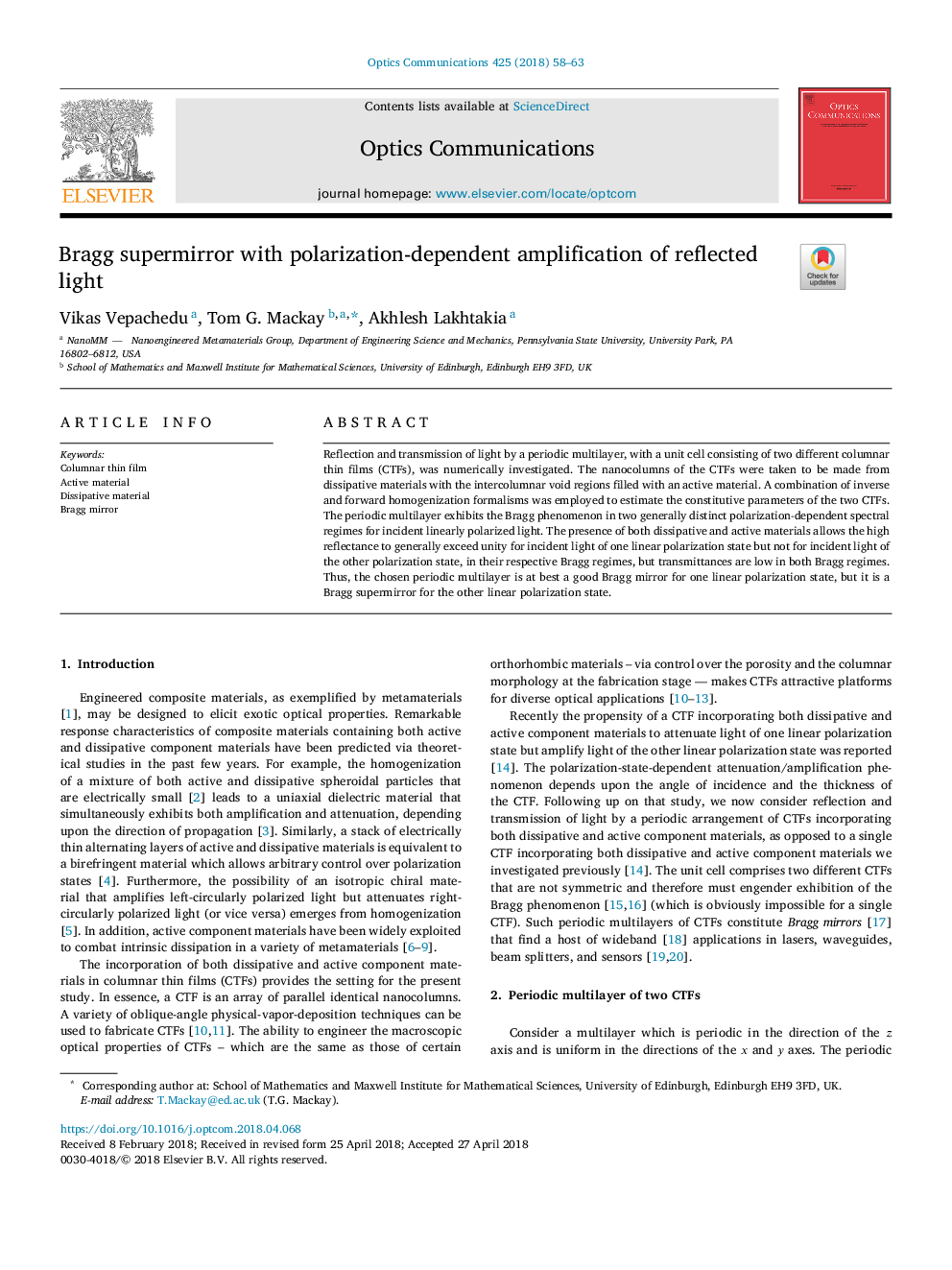| Article ID | Journal | Published Year | Pages | File Type |
|---|---|---|---|---|
| 7924869 | Optics Communications | 2018 | 6 Pages |
Abstract
Reflection and transmission of light by a periodic multilayer, with a unit cell consisting of two different columnar thin films (CTFs), was numerically investigated. The nanocolumns of the CTFs were taken to be made from dissipative materials with the intercolumnar void regions filled with an active material. A combination of inverse and forward homogenization formalisms was employed to estimate the constitutive parameters of the two CTFs. The periodic multilayer exhibits the Bragg phenomenon in two generally distinct polarization-dependent spectral regimes for incident linearly polarized light. The presence of both dissipative and active materials allows the high reflectance to generally exceed unity for incident light of one linear polarization state but not for incident light of the other polarization state, in their respective Bragg regimes, but transmittances are low in both Bragg regimes. Thus, the chosen periodic multilayer is at best a good Bragg mirror for one linear polarization state, but it is a Bragg supermirror for the other linear polarization state.
Related Topics
Physical Sciences and Engineering
Materials Science
Electronic, Optical and Magnetic Materials
Authors
Vikas Vepachedu, Tom G. Mackay, Akhlesh Lakhtakia,
